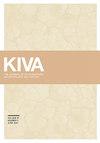古玉米在西德克萨斯大弯地区使用的证据
IF 0.4
0 ARCHAEOLOGY
Kiva-Journal of Southwestern Anthropology and History
Pub Date : 2022-01-02
DOI:10.1080/00231940.2021.2004360
引用次数: 0
摘要
在得克萨斯州西部跨佩科斯地区的大弯地区发现了晚期古玉米,这使其成为美国西南部最早使用栽培玉米的地区之一。以前对玉米使用的解释仅限于形成期遗址,但新获得的AMS日期将已知的使用期限延长了一千多年。然而,该地区缺乏明确的人口和定居模式,无法诊断邻近地区早期的使用情况。由于缺乏关键的行为和定居点相似性,当地研究人员认为早期使用邪教是肤浅的。现在看来,与美国西南部更大的地区一样,Trans Pecos地区最初使用玉米的时间既早又广泛,对定居和生存模式的影响尚不清楚。本文通过已知的例子,在更大的背景下,阐述了玉米在Trans-Pecos地区的作用、最初的引入和使用强度。本文章由计算机程序翻译,如有差异,请以英文原文为准。
Evidence of Late Archaic Maize Use in the Big Bend Region of West Texas
The identification of Late Archaic maize from the Big Bend portion of the Trans-Pecos region of West Texas places it among the earliest use of cultigens reported throughout the American Southwest. The previous interpretation of maize use was restricted to Formative period sites, but newly acquired AMS dates extend the known duration of use over a millennium. The region, however, lacks clear demographic and settlement patterns diagnostic of this early period of use present in adjacent areas. Lacking key behavioral and settlement similarities, local researchers argued the early use of cultigens was superficial. It now seems the initial maize use in the Trans-Pecos, like the larger US Southwest region, was both early and extensive, and the effects on settlement and subsistence patterns are unknown. This paper situates maize's role and the initial introduction and intensity of use in the Trans-Pecos region in a larger context with known examples.
求助全文
通过发布文献求助,成功后即可免费获取论文全文。
去求助
来源期刊
CiteScore
0.70
自引率
33.30%
发文量
31

 求助内容:
求助内容: 应助结果提醒方式:
应助结果提醒方式:


